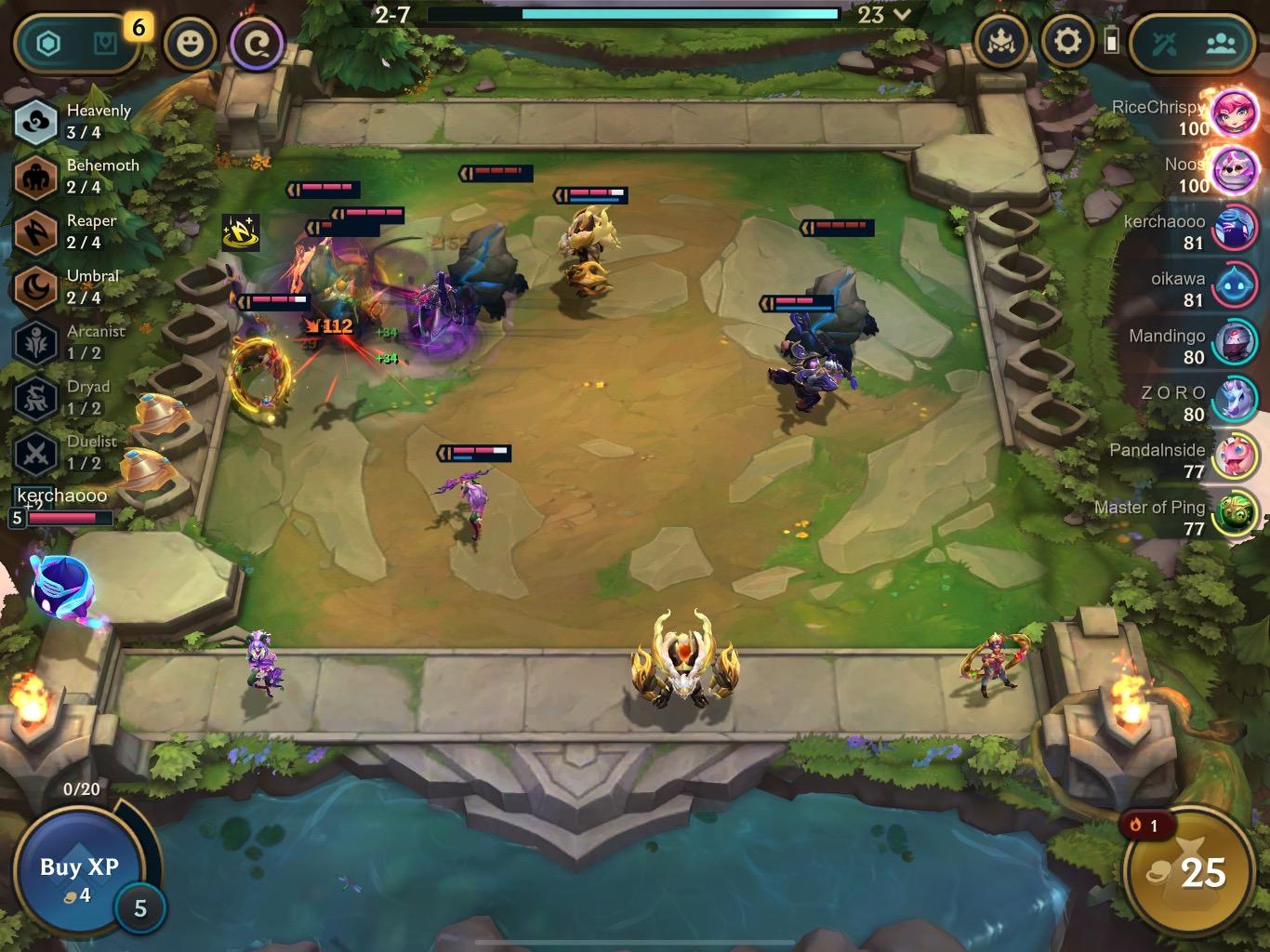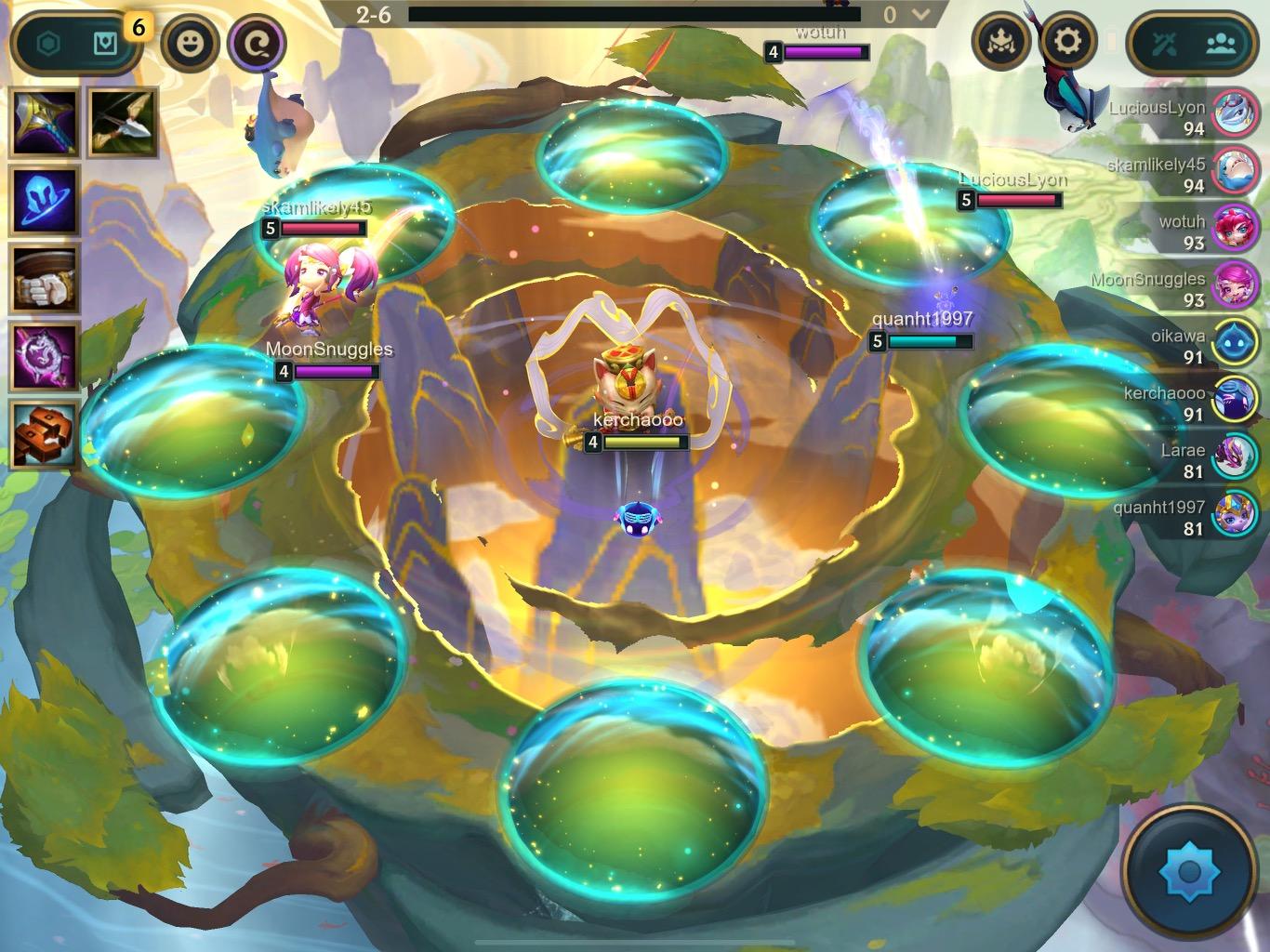Teamfight Tactics (TFT) is a strategic free-for-all game of attrition created by Riot Games, available on both mobile and desktop with cross-platform support. The target audience of TFT is people who enjoy strategy and puzzle games, so usually for young adults or adults. The goal of TFT is decently simple to understand: the player recruits champions to form a team that battles other players’ teams for multiple rounds. The types of champions you choose to purchase is strategic as champions that belong in a set have good synergies with each other, which benefit the player’s team strength greatly. As such, I argue that Teamfight Tactics is similar to our game, Works of Art, by hinging on strategic acquisition of certain pieces that greatly benefit the player, while maintaining differences through divergent player experiences in each game.
Both TFT and our art collecting game hinge on the strategic acquisition of pieces that complement each other. In TFT, players draft champions from a pool, aiming to assemble a team composition that capitalizes on class and origin bonuses. Similarly, our game requires players to collect art pieces, likely categorized by artistic movements or periods. Both games incentivize players to prioritize pieces that not only hold individual value but also contribute to a cohesive collection that unlocks superior bonuses that may change the tide of the game for the player. As such, in both TFT and our art collecting game, strategic acquisition is key. Both games incentivize players to prioritize individual piece value while keeping the bigger picture of the cohesive set in mind. This shared focus on strategic acquisition and the satisfaction of building a powerful set creates a compelling gameplay loop for players in both experiences.

[TFT Gameplay – Sets shown on the left side]
However, the core experiences offered by each game diverge from each other. TFT emphasizes quick, tactical battles where players outmaneuver opponents through superior team compositions and clever in-game decisions. These champions also have the additional benefit of items, which can be used to boost a champion’s abilities and overall boost the team. The focus lies on mastering champion synergies, understanding item interactions, and adapting to the ever-changing flow of the match to outstrategize the opponent. In contrast, Works of Art prioritizes a slower and more social experience. Our game concept focuses the on social interactions between players as players must strategically outbid their opponents in auctions in order to secure the most valuable collection. Players are able to choose between cooperation (often between others with sets that do not overlap) or competition (often with those who have sets which do overlap). In addition, the slow and deliberate pace allows players to appreciate the various art pieces that come out of different art movements and the various artistic styles of each individual pieces. In fact, although players are incentivized to build art collections based on their role, players could instead build collections that reflect their personal taste. As such, both approaches offer distinct avenues for player engagement through the variety of experiences offered by each game.
In conclusion, both Teamfight Tactics and Works of Art offer strategic gameplay built around set building and set bonuses. However, the core dynamics of the game and resulting player experience differ significantly.

[TFT gameplay – Teemo encounter]



